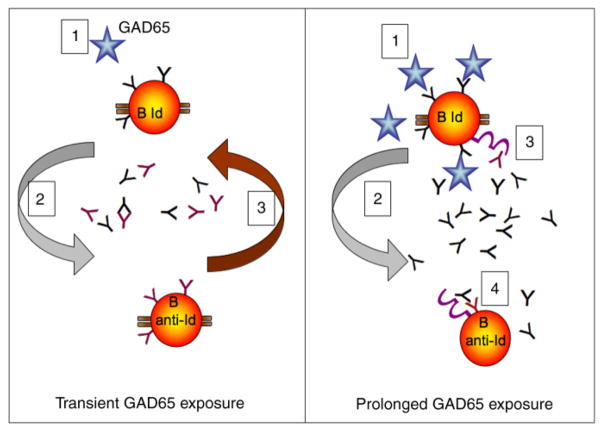Figure 6.
Model for the Failure of the Idiotypic Network in T1D during prolonged GAD65 exposure. Left panel: In the healthy individual, transient introduction of GAD65 (1) will cause a temporary disturbance of the Network’s equilibrium. GAD65 will stimulate the secretion of GAD65Ab, which will in turn stimulate the secretion of anti-Id from specific B lymphocytes (2), restoring the equilibrium (3). Right panel: The continuous presence of GAD65 (beta cell injury/death) will destroy the Network. As before, GAD65 stimulates secretion of GAD65Ab (1), which initially will trigger the production of anti-Id (2). However, GAD65 itself binds to the BCR on GAD65Ab-specific B lymphocytes, both stimulating these specific B lymphocytes and preventing the anti-Id from co-ligating the BCR with the FcγRIIB (3). With increasing GAD65Ab levels, co-ligation of the BCR with the FcγRIIB on anti-Id specific B lymphocytes (4) will generate a net inhibitory signal, resulting first in the inhibition of anti-Id secretion and eventually in the apoptosis of anti-Id specific B lymphocytes.

